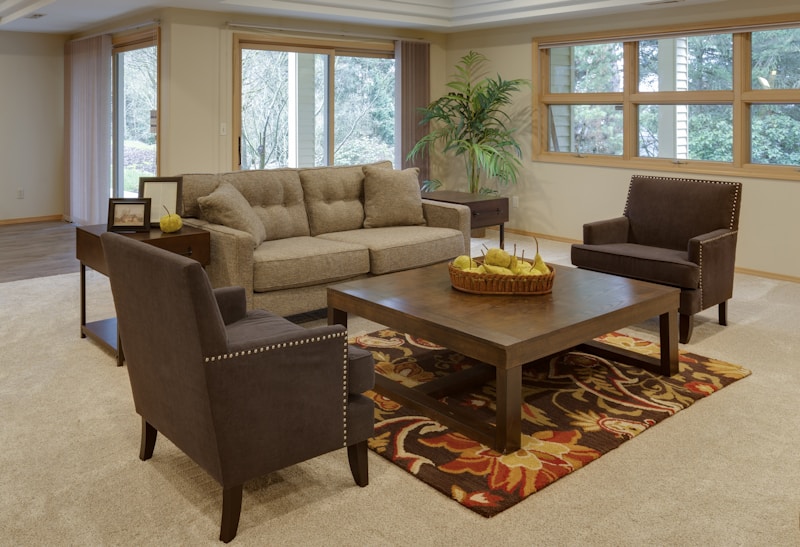Exploring Layered Textures and Fabrics for Cozy Interiors: Creating Warmth in Your Home
Exploring Layered Textures and Fabrics for Cozy Interiors: Creating Warmth in Your Home
In today's design world, creating cozy interiors has become a priority for many homeowners and interior designers. One of the most effective ways to achieve a warm and inviting atmosphere is through the use of layered textures and fabrics. This article will guide you on how to incorporate these elements into your living space, transforming it into a haven of comfort and style.
The Importance of Layered Textures
Layered textures play a crucial role in enhancing the visual and tactile experience of a room. By combining different materials and finishes, you can create depth and interest. Here are some key reasons why layering textures is essential for cozy interiors:
- Visual Appeal: Mixing various textures, such as smooth, rough, soft, and hard, creates a dynamic aesthetic.
- Comfort: Different fabrics contribute to a cozy feel, inviting people to relax and unwind.
- Depth: Layers add depth to your space, making it more engaging and enhancing the overall design.
Common Materials for Layering
When layering textures, consider incorporating a variety of fabrics and finishes. Here are some popular materials that work well together:
| Fabric Type | Texture Characteristics | Ideal Usage |
| Cotton | Soft, breathable, versatile | Pillows, throws, curtains |
| Wool | Warm, durable, rich | Blankets, rugs, upholstery |
| Linen | Textured, lightweight, natural | Cushions, table covers, drapes |
| Velvet | Luxurious, rich, soft | Sofas, accent chairs, decorative pillows |
| Leather | Sleek, tough, timeless | Furniture, accessories, accents |
Creating Cozy Interiors with Layered Fabrics
To create interiors full of warmth and comfort, follow these practical steps to layer textures effectively:
1. Start with a Neutral Base
Begin with a neutral color palette for your walls and major furnishings. Shades of beige, gray, white, or soft pastels provide a calming foundation that allows for layering colorful and textured fabrics on top.

2. Introduce Different Textures
Incorporate textiles with varying textures. For example, a plush wool rug can add warmth to a hardwood floor, while linen drapes can soften a room's edges. Experiment with combinations that appeal to your senses.
3. Use Color Wisely
While layering is key, consider the color scheme carefully. You might choose a monochromatic look with varying shades of the same color or go for complementary colors for a more vibrant atmosphere. This will help create harmony and balance in your interior design.
4. Play with Scale
Mix large and small-scale patterns to add interest. For example, a large floral print can be complemented by a smaller geometric pattern in throw pillows. This combination creates a visually stimulating space.
Layering Accessories for Added Cozy Feel
Textiles are not restricted to furniture and window treatments. Accessories can also play a significant role in layering textures. Here are some suggestions:
- Throw Blankets: Drape a wool or knitted throw over your sofa or chair for an inviting touch.
- Pillows: Use an assortment of pillows in various fabrics, sizes, and patterns to enhance your seating area.
- Art and Wall Hangings: Incorporate fabric wall hangings or textured art pieces to add dimension and character to your walls.
5. Bring Nature Indoors
Adding natural elements can enhance the coziness of your interior. Consider using jute or sisal rugs, wooden furniture, or stone accents. These materials create a connection to nature while complementing layered fabrics.
Common Mistakes to Avoid When Layering Textures
While layering fabrics and textures can significantly enhance your interiors, there are common pitfalls to be mindful of:
- Overloading Textures: Too many conflicting textures can overwhelm a space. Aim for a cohesive look instead.
- Ignoring Scale: Large pieces with small accessories can throw off balance. Ensure your textures work together in scale.
- Color Clashing: Be cautious with color choices. Ensure that your layered textures harmonize for visual comfort.
Final Thoughts on Layered Textures and Fabrics
In conclusion, layered textures and fabrics are essential for creating cozy interiors that invite comfort and warmth. By strategically combining various materials, colors, and designs, you can transform any space into a relaxing escape. Remember to keep a cohesive vision in mind, choose your textures wisely, and avoid common mistakes. With the right approach, you will not only beautify your home but also enhance its overall ambiance, making it a haven of cozy living.
So grab those cozy fabrics and start layering today!
Summary: When designing your interiors, focus on layering textures and fabrics to create warmth. Use a mix of materials like cotton, wool, linen, velvet, and leather while also considering color, scale, and accessories. Avoid common mistakes such as overloading textures or ignoring color harmony. Embrace these tips to achieve a cozy, inviting atmosphere in your home.
